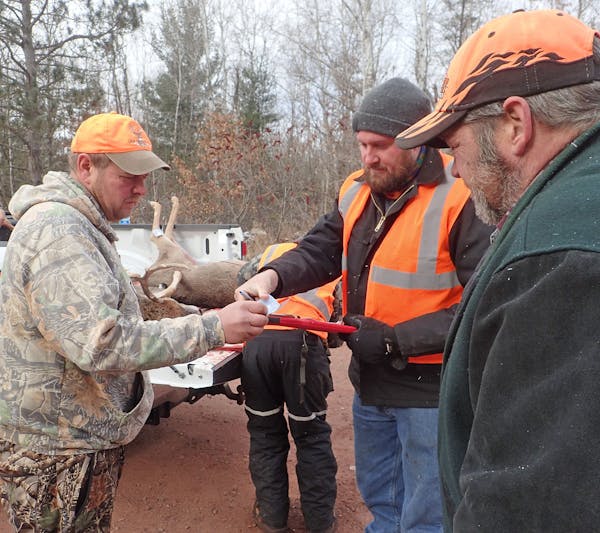Chances any of us will survive long-term as we hurl through space on this hot rock of ours are minimized by our collective cluelessness, an observation never so true as in recent days with the fuss made over the U.S. Bank Stadium bird-killer study.
The research's intent was to determine whether and if so how many birds are killed when crashing into the stadium. The assumption by "conservationists" (the media's description) who demanded the study was that the stadium's glassy façade poses a particular risk to winged critters.
The conclusion? The Vikings' home field kills … wait for it … 111 birds a year, third-most among downtown structures.
If only to gain context, one would have thought someone in this shadow boxing exercise would have asked, as one example, "Well, OK, how many ducks did hunters kill last year in Minnesota?" Or pheasants. Or ruffed grouse?
Answers: 615,000 ducks. 205,000 pheasants. And 195,515 ruffed grouse.
So, are we running out of ducks, pheasants or ruffed grouse?
No, because harvests of these birds is essentially compensatory to their overall annual mortality, not additive. Meaning, and I'm simplifying here in part to account for species and gender distinctions within overall duck and pheasant harvests, that when considered on a population level, the same, or similar, number of these birds would have died anyway, by some other means, in the course of a year.
Moreover, abundance of these birds — as is also the case with the sparrows, warblers and ovenbirds cited in the stadium study — has far less to do with their mortality causes or rates, the latter of which vary by the relative sizes of their populations, than to the availability of healthy habitats.
Two points:
• The aforementioned "conservationists" are demanding the Vikings and the Metropolitan Stadium Facilities Commission somehow modify the stadium and/or its surroundings to mitigate the estimated bird losses.
Adjusting the stadium's lights at night, especially during peak spring and fall migration times, is easy. Removing vegetation from around the stadium is another no-brainer. But blowing about $1 million — the high end of one hypothetical remedy — to rework the stadium's glass to "save" a theoretical 111 birds would be little more than a bow to political correctness, because, 1) the birds are highly unlikely to be "saved" on a population level, and 2) though no Minneapolis bird-loss data exist for years before the stadium's construction, it's possible, even likely, the same number of birds were being killed in the city's center by other causes.
• One would think policymakers and others who are tilting at windmills here would seek out other studies examining bird losses due to collision mortality before relying so much on this recent analysis.
In fact, the gold standard of such examinations, titled, "Collision mortality has no discernible effect on population trends of North American birds," was published by two noted U researchers, Todd Arnold and Bob Zink, in 2011.
Simply documenting what species are killed and in what frequencies, the study concluded, does not identify whether a particular threat constitutes an additive source of mortality … If bird populations are ultimately limited by habitat availability, collision mortality will be largely compensatory to natural sources of mortality.
Want to be a real conservationist? Help clean up the state's multitudinous dirty lakes and rivers. Donate to the DNR nongame wildlife program via the "chickadee checkoff." Or support one or more of these groups, each of which actually advocates for, enhances and/or develops bird habitat on the ground in this state, much of which benefits the same songbirds cited in the stadium bird-collision study: Ducks Unlimited. Pheasants Forever. The Ruffed Grouse Society.
danderson@startribune.com

Anderson: Celebrate Earth Day by rekindling real connection to nature
Anderson: Anglers protesting tough new Mille Lacs rules are wrong

Anderson: Courts, not politicians, should rule on Red Lake, White Earth lands

Anderson: Multimillion windfall gets invasive carp deterrent moving
![A young whitetail deer searches for food as another blanket of snow coats the arrowhead. ] Minnesota -State of Wonders, Arrowhead in Winter BRIAN PETE](https://arc.stimg.co/startribunemedia/WK32UWWY6FKNWJUIYCJ6ZPT4AU.jpg?h=91&w=145&fit=crop&bg=999&crop=faces)

